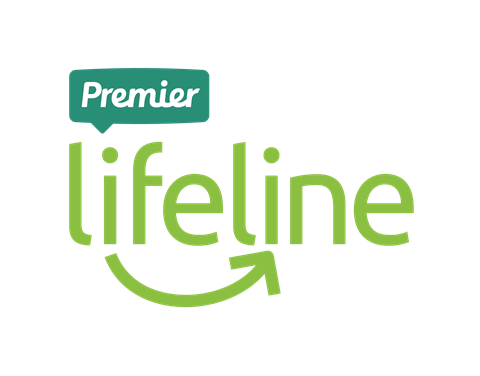
Open-ended activities provide choice and freedom which lead to deep exploration and creativity. They are easy to set up, suitable for any age group, and you can use the same materials each time. They provide space for both children and adults to explore Bible stories and spirituality together and come to conclusions that stick.
How do open-ended activities work?
There is quite a spectrum of open-endedness, from activities where you start children off then let them choose which direction to take, through activities where examples, prompts or questions are given to stimulate a creative response, to completely open-ended activities with freedom for participants to use materials however they choose.
Such open-endedness gives freedom for participants to explore and discover, rather than be taught and remember. It allows for true participation, in which the activity of all those taking part are valued. I usually find the best learning takes place when people make their own choices about what and how to learn and are given freedom to explore and discover things. This can be scary when applying it to faith: what if they discover something about God which isn’t true? However, I’ve never found children ‘discovering’ things I find heretical. Rather, I find their ideas stimulate my own wondering and journey with familiar texts, bringing me into to a deeper understanding and faith.
How does this work?
Here’s how I set things up in my home. I pick a limited number of open-ended materials and set them up. These are usually contrasting activities such as blocks for building, art materials for making a picture, cloth for dressing up or den making and loose parts to make a process piece of art (more on that in a moment). We share the story together, using Godly Play pieces, Play mobil or reading from the Bible (I use the CEV, as it’s very accessible, reliable and reads well).
We then wonder together about our favourite part of the story, the most important bits and where we might be in the story. My children are only 4 and 5, so this isn’t a long discussion at this point, but it starts the creative process, which we carry on with the open-ended materials. We then pick which materials we’d like to use (usually different ones to give each other space) and explore the story using them. I always join in with my children, as it’s our journey together. We can continue our exploration as long as we want to. This might be a bit messy, but also leaves the space open for us to continue our exploration at a later time, which I find my children often do.
With no prepared outcomes, some adults find this a lot harder than the children do. As adults, we’re much more used to prepared activities with goals and learning outcomes in mind. And these are good, but they’re not the only way to learn and grow faith. In fact, by deciding what I want the outcome to be, I will often limit both engagement in the activity and what children get out of it.
As a children’s group leader for years, I’ve found it hard (but good) to step out of directed, guided, often cerebral ways of approaching a story, often with a moral outcome and a pre-organised craft. After all, it’s much safer to know what’s planned. However, it’s much easier to use the same materials for each story, allowing the participants freedom to use them however they choose to explore the story. They rarely disappoint.
Children, especially under-5s, revel in this kind of open-ended approach, as many nurseries and pre-schools have adopted what is now a well-documented approach to learning. With very young children it’s important, of course, to make sure things are safe for them to use independently, so I avoid using buttons, small stones or Play mobil. However, they are brilliantly creative and will happily mix and match items.
To help with this, consider having a ‘tinker tray’. This is a tray with different compartments in which you provide collections of different items. It’s linked with the theory of loose parts, something originally from architecture theory, and says the more loose parts you have, the more opportunity for creativity. A tinker tray could contain collections of natural objects such as pine cones, sticks, shells and stones, wooden objects such as lolly sticks, match sticks, beads or craft items such as pipe cleaners and straws; using the items in the tray to create art as a response, before returning them to the tray, helps children to focus on the process, rather than the end product. In Children’s spirituality: what it is and why it matters Rebecca Nye lists process as one of her six key elements for helping people develop spiritually, and it’s one which is often over looked when we try to provide children with a take-home element to remind them of ‘what they learnt’ or more often, to show their parents.
There’s something special about creating something knowing it won’t be there tomorrow, like building a sand castle below the high-tide line. It releases us to focus completely on process of creation, not worrying about what it will be or look like. If I only draw or create something to photograph it and put it on Instragram, I limit my creativity and expression. Theologically, this means I will rarely head out of the realm I feel I understand and can explain to others. I can’t process ideas about difficult concepts such as transition, grief or guilt. I can’t use creative expression to chat with God about private things or explore difficult passages of scripture I don’t yet have a grasp of. By providing open-ended activities, we make much needed space for process.
It is sometimes the case that older children and adults aren’t quite sure what to choose or what to do, whereas young children jump in and get going straight away. It’s generally the case that the older you are, the less access you have to open-ended materials and free play. The creative freedom they provide can be overwhelming when you’re not used to it. When introducing them at home or in a group I will often limit the options to aid choice, and give people tips such as: “Pick something you really want to try out,” or “Find something you feel comfortable using.”
Children (and adults!) often immerse themselves in an activity which seems to be unrelated to the story we’ve shared together. It can seem as if they are distracted, but the opposite is usually true. Open-ended activities give space for people to explore what they choose and what they choose is what they need to do at this time. Often people are processing something when they come to a session, in fact, in life we are all processing stuff all the time. Sometimes a free choice, self-directed opportunity gives people a chance to process grief or transition, or questions they have about God or life, or decisions they’re struggling with, or new seasons they’re exploring. Sometimes their processing interacts with the story. Sometimes it doesn’t. Either way, the activity provides a safe spiritual space, especially when leaders restrain themselves from asking people what they’re doing. This provides privacy and freedom, and people who want to share can always choose to do so.
What are the disadvantages?
With no prepared outcome, it’s hard to work through a list of things we want children to learn. Curriculums which use this approach, such as Godly Play, work through a set of stories, trusting that the children learn what they need to from each story. The stories are repeated in a cycle, knowing that we get different things from Bible stories at different times. The stories and the way they’re told is very intentional, giving opportunities for many different types of ‘learning’ to take place.
For me it’s been a case of developing more trust. I have learnt to trust that children are spiritual beings, that they are searching to make sense of the world and the Bible and their own lives and that given opportunity to play with open-ended materials they do this important work. I have also learnt to trust God more, to trust that he is not a static object which we study but a proactive being seeking out connection and relationship with us, and that both understanding and connection often unfold in an open-ended activity. It’s a powerful way for children and families to learn and grow in faith.




























